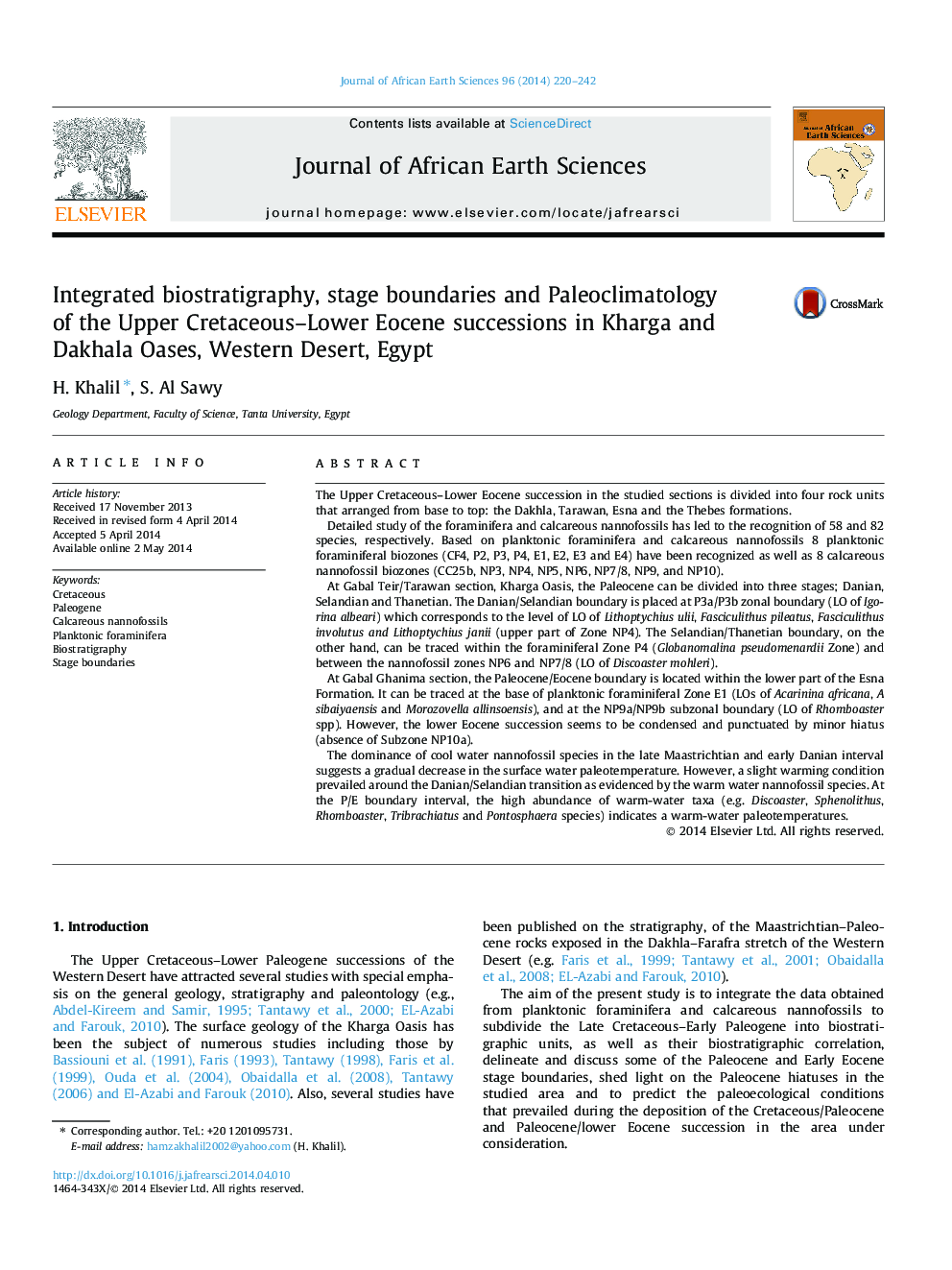| کد مقاله | کد نشریه | سال انتشار | مقاله انگلیسی | نسخه تمام متن |
|---|---|---|---|---|
| 4728876 | 1640210 | 2014 | 23 صفحه PDF | دانلود رایگان |
• Maastrichtian–Eocene rocks in Kharga and Dakhla Oases were divided into three formations.
• Integrated eight planktonic and eight nannofossil biozones have been recognized.
• Stage boundaries have been delineated based on fossils datum events.
• Cooling around M/Da and warming around Da/Se boundaries were suggested.
• A warm-water paleotemperatures at the P/E boundary is detected.
The Upper Cretaceous–Lower Eocene succession in the studied sections is divided into four rock units that arranged from base to top: the Dakhla, Tarawan, Esna and the Thebes formations.Detailed study of the foraminifera and calcareous nannofossils has led to the recognition of 58 and 82 species, respectively. Based on planktonic foraminifera and calcareous nannofossils 8 planktonic foraminiferal biozones (CF4, P2, P3, P4, E1, E2, E3 and E4) have been recognized as well as 8 calcareous nannofossil biozones (CC25b, NP3, NP4, NP5, NP6, NP7/8, NP9, and NP10).At Gabal Teir/Tarawan section, Kharga Oasis, the Paleocene can be divided into three stages; Danian, Selandian and Thanetian. The Danian/Selandian boundary is placed at P3a/P3b zonal boundary (LO of Igorina albeari) which corresponds to the level of LO of Lithoptychius ulii, Fasciculithus pileatus, Fasciculithus involutus and Lithoptychius janii (upper part of Zone NP4). The Selandian/Thanetian boundary, on the other hand, can be traced within the foraminiferal Zone P4 (Globanomalina pseudomenardii Zone) and between the nannofossil zones NP6 and NP7/8 (LO of Discoaster mohleri).At Gabal Ghanima section, the Paleocene/Eocene boundary is located within the lower part of the Esna Formation. It can be traced at the base of planktonic foraminiferal Zone E1 (LOs of Acarinina africana, A sibaiyaensis and Morozovella allinsoensis), and at the NP9a/NP9b subzonal boundary (LO of Rhomboaster spp). However, the lower Eocene succession seems to be condensed and punctuated by minor hiatus (absence of Subzone NP10a).The dominance of cool water nannofossil species in the late Maastrichtian and early Danian interval suggests a gradual decrease in the surface water paleotemperature. However, a slight warming condition prevailed around the Danian/Selandian transition as evidenced by the warm water nannofossil species. At the P/E boundary interval, the high abundance of warm-water taxa (e.g. Discoaster, Sphenolithus, Rhomboaster, Tribrachiatus and Pontosphaera species) indicates a warm-water paleotemperatures.
Journal: Journal of African Earth Sciences - Volume 96, August 2014, Pages 220–242
